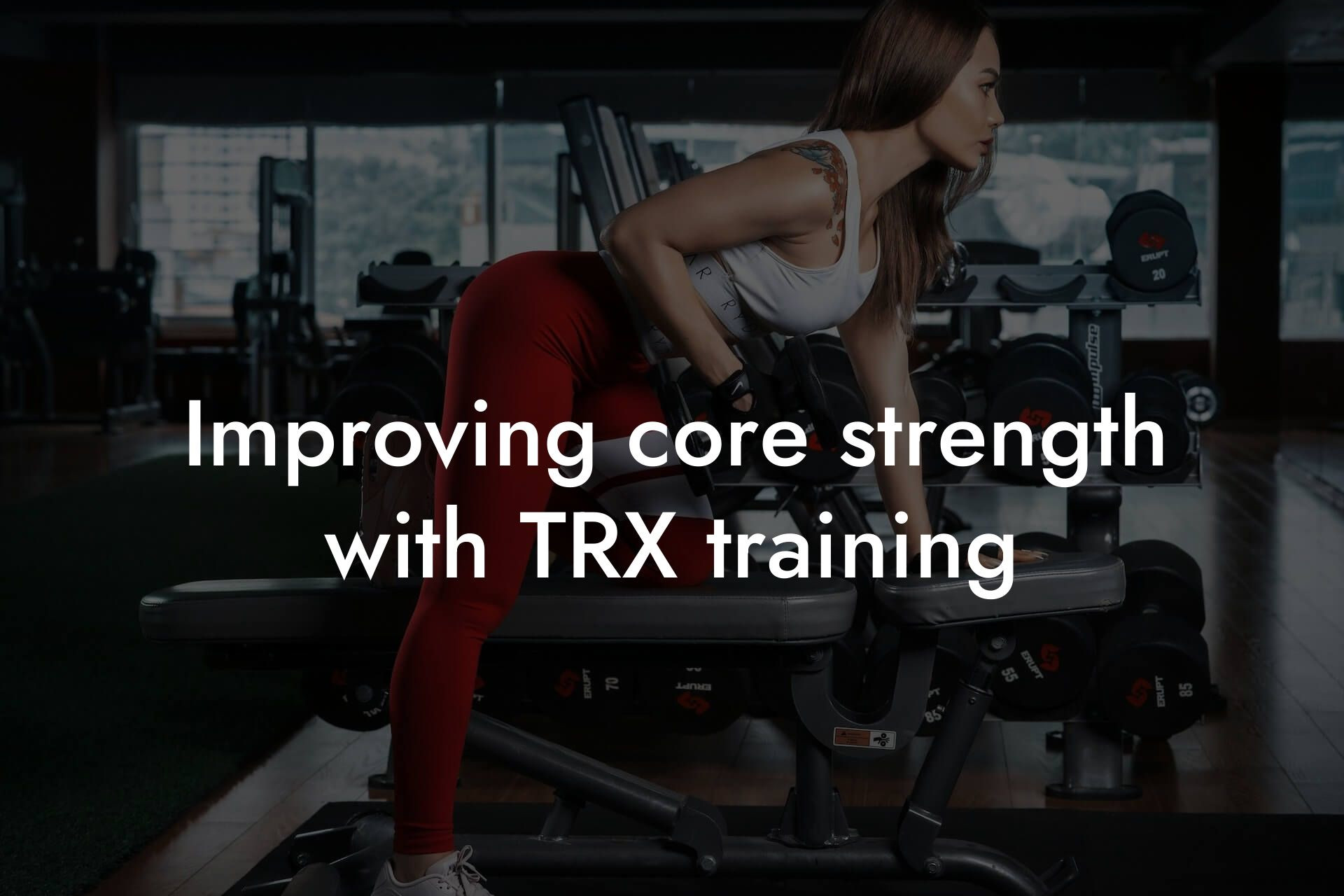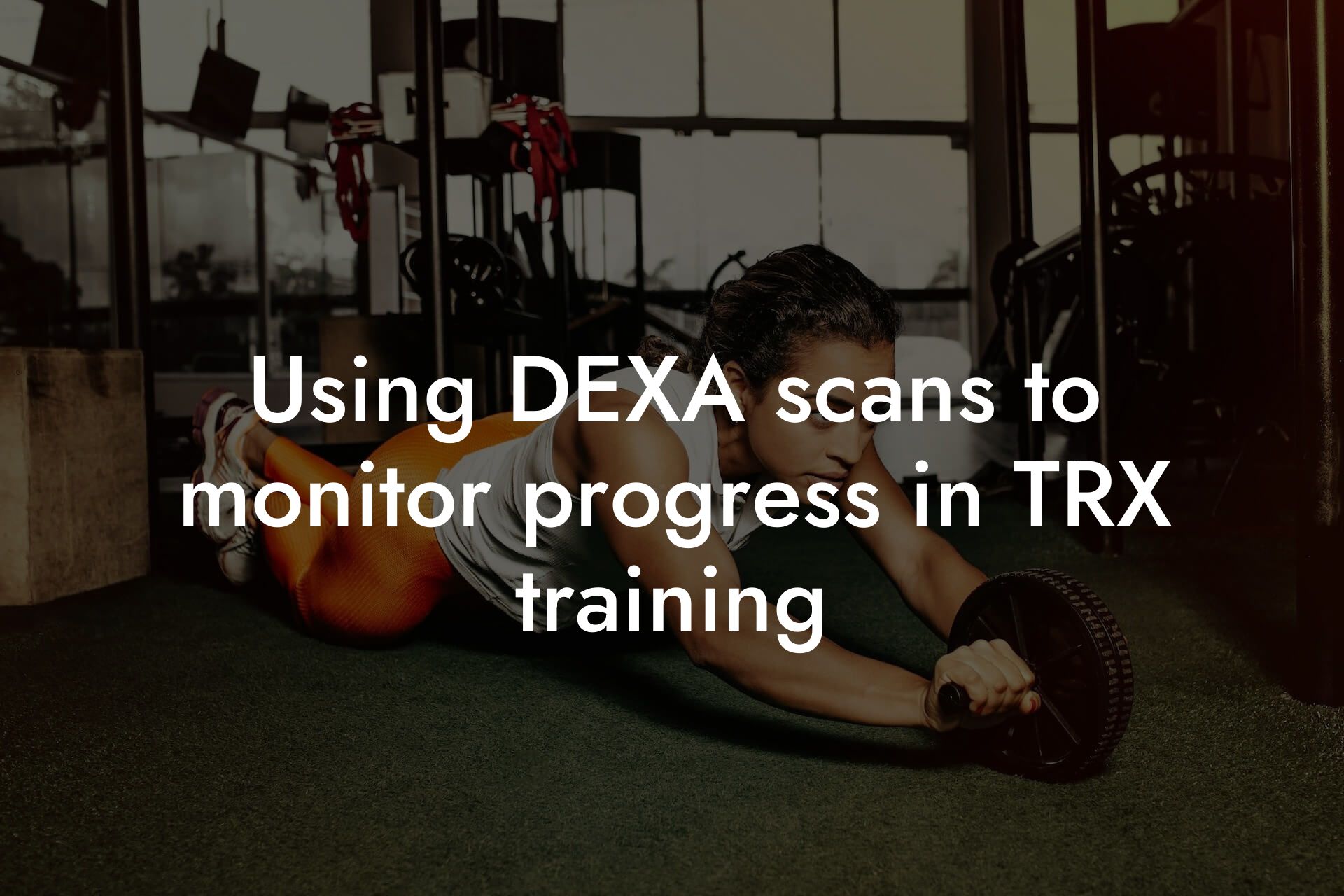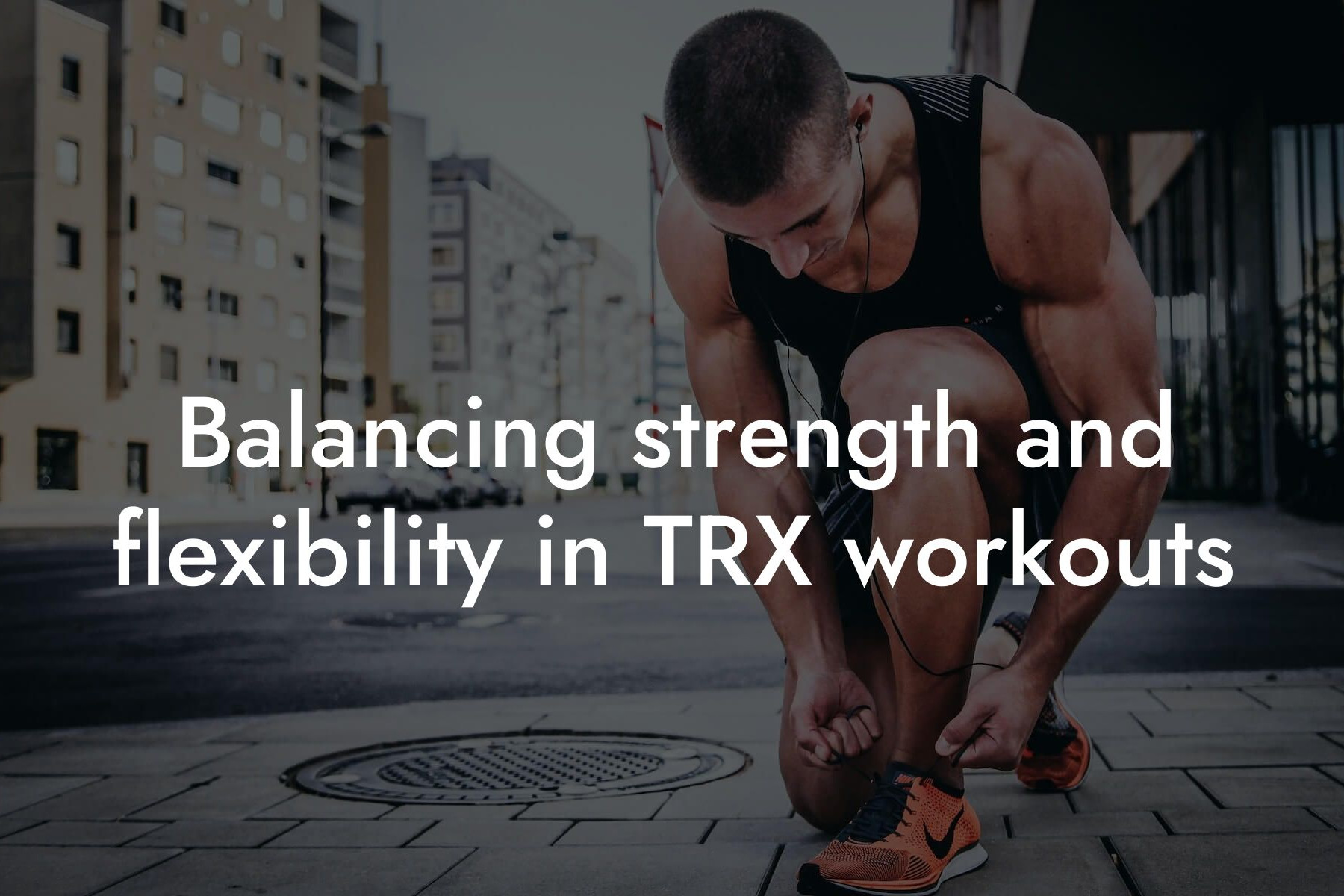Understanding Body Composition
Body composition refers to the proportion of fat and lean mass in the body. It's a critical aspect of overall health and fitness, as it can affect athletic performance, metabolism, and even overall well-being. When it comes to TRX training, body composition plays a significant role in determining performance, progress, and even safety. In this article, we'll delve into the ways body composition affects TRX training performance and provide valuable insights for high-earning professionals looking to optimize their physique and performance.
Table of Contents
- Understanding Body Composition
- The Importance of Lean Mass
- The Impact of Body Fat on TRX Performance
- How Bone Density Affects TRX Training
- The Role of Muscle Imbalances in TRX Training
- How Body Composition Affects TRX Exercise Selection
- The Importance of Progressive Overload in TRX Training
- Using DEXA Scans to Optimize TRX Training
- Frequently Asked Questions
The Importance of Lean Mass
Lean mass, which includes muscle mass, bone density, and water, is a crucial component of body composition. In TRX training, lean mass is essential for generating power, speed, and endurance. The more lean mass you have, the more efficient you'll be at performing exercises and the less likely you'll be to experience fatigue. Additionally, lean mass helps to increase metabolism, which can aid in weight loss and improve overall body composition.
The Impact of Body Fat on TRX Performance
Excess body fat can significantly hinder TRX training performance. Carrying extra weight can put additional stress on joints, leading to increased risk of injury. Furthermore, excess body fat can reduce power output, slow down movement, and decrease overall endurance. In TRX training, which often involves suspension exercises that engage multiple muscle groups, excess body fat can make it more challenging to maintain proper form and execute movements efficiently.
How Bone Density Affects TRX Training
Bone density is another critical aspect of body composition that affects TRX training performance. As we age, bone density naturally decreases, which can increase the risk of osteoporosis and fractures. In TRX training, which often involves high-impact movements and weight-bearing exercises, low bone density can increase the risk of injury. On the other hand, high bone density can improve overall athletic performance and reduce the risk of osteoporosis.
The Role of Muscle Imbalances in TRX Training
Muscle imbalances occur when some muscles are stronger or tighter than others, leading to poor posture, decreased performance, and increased risk of injury. In TRX training, muscle imbalances can be particularly problematic, as suspension exercises often engage multiple muscle groups simultaneously. Identifying and addressing muscle imbalances through targeted exercises and stretches can help improve TRX training performance and reduce the risk of injury.
How Body Composition Affects TRX Exercise Selection
Body composition plays a significant role in selecting the right TRX exercises for optimal performance. For example, individuals with a higher percentage of body fat may need to modify exercises to reduce the impact on joints or focus on exercises that target specific muscle groups. On the other hand, individuals with a high percentage of lean mass may be able to perform more advanced exercises that engage multiple muscle groups simultaneously.
The Importance of Progressive Overload in TRX Training
Progressive overload, which involves gradually increasing the intensity of exercises over time, is essential for improving TRX training performance. However, body composition can affect the ability to progressively overload exercises. For example, individuals with a high percentage of body fat may need to start with lighter loads and gradually increase the intensity as they lose weight and improve body composition. On the other hand, individuals with a high percentage of lean mass may be able to handle heavier loads and more intense exercises from the outset.
Using DEXA Scans to Optimize TRX Training
DEXA (Dual-Energy X-ray Absorptiometry) scans are a valuable tool for assessing body composition and tracking progress over time. By providing a detailed breakdown of lean mass, fat mass, and bone density, DEXA scans can help high-earning professionals identify areas for improvement and optimize their TRX training program. At Tano Performance Group, we use DEXA scans as part of our comprehensive body assessment to provide clients with a complete picture of their body composition and help them achieve their fitness goals.
In conclusion, body composition plays a critical role in TRX training performance. By understanding the importance of lean mass, the impact of body fat, and the role of bone density and muscle imbalances, high-earning professionals can optimize their TRX training program and achieve their fitness goals. By incorporating DEXA scans into their training program, individuals can track progress, identify areas for improvement, and make data-driven decisions to optimize their physique and performance. At Tano Performance Group, we're committed to helping high-earning professionals achieve their fitness goals and take their business to the next level.
Frequently Asked Questions
What is body composition, and why is it important for TRX training performance?
Body composition refers to the percentage of fat, lean mass, bone density, and water in your body. It's essential for TRX training performance because it affects your overall strength, endurance, and flexibility. A healthy body composition can improve your TRX workout efficiency, reduce the risk of injury, and enhance your overall physical appearance.
How does body fat percentage impact TRX training?
Excess body fat can hinder TRX training performance by reducing strength, endurance, and flexibility. It can also increase the risk of injury, particularly in the joints. On the other hand, a healthy body fat percentage can improve TRX workout efficiency and enhance overall physical appearance.
What is the ideal body fat percentage for TRX training?
The ideal body fat percentage for TRX training varies depending on age, gender, and fitness goals. Generally, a body fat percentage of 10-15% for men and 15-20% for women is considered ideal for optimal TRX training performance.
How does lean mass affect TRX training performance?
Lean mass, which includes muscle mass and bone density, is essential for TRX training performance. It provides the strength and endurance needed to perform exercises efficiently and effectively. A higher lean mass percentage can improve TRX workout performance and reduce the risk of injury.
What is the relationship between bone density and TRX training?
Bone density is crucial for TRX training as it provides the structural support needed for exercises that involve suspension and movement. A higher bone density can improve TRX training performance and reduce the risk of osteoporosis and fractures.
How can I measure my body composition?
There are several ways to measure body composition, including dual-energy X-ray absorptiometry (DXA), skinfold measurements, bioelectrical impedance analysis (BIA), and hydrostatic weighing. Consult with a healthcare professional or certified fitness expert to determine the best method for you.
What are the benefits of having a healthy body composition for TRX training?
A healthy body composition can improve TRX training performance, reduce the risk of injury, enhance overall physical appearance, and boost confidence. It can also improve overall health and well-being by reducing the risk of chronic diseases such as diabetes and heart disease.
How can I improve my body composition for TRX training?
Improving body composition for TRX training requires a combination of proper nutrition, regular exercise, and sufficient rest. Focus on consuming a balanced diet, engaging in regular TRX workouts, and getting enough sleep to support muscle recovery and growth.
What role does nutrition play in body composition for TRX training?
Nutrition plays a critical role in body composition for TRX training. A balanced diet that includes lean protein, complex carbohydrates, and healthy fats can support muscle growth and recovery, while a diet high in processed foods and sugar can hinder progress.
How can I optimize my TRX workout routine for my body composition?
Optimizing your TRX workout routine for your body composition involves tailoring your exercises to your fitness goals and body type. Focus on exercises that target your weak areas, and adjust the intensity and volume of your workouts based on your body composition.
What are some common mistakes people make when it comes to body composition and TRX training?
Common mistakes people make when it comes to body composition and TRX training include neglecting proper nutrition, not getting enough rest, and pushing themselves too hard without adequate recovery time. It's essential to strike a balance between exercise, nutrition, and rest to achieve optimal body composition and TRX training performance.
How can I track my progress and adjust my TRX workout routine accordingly?
Tracking your progress involves monitoring your body composition, workout performance, and overall health. Use tools such as body fat calipers, progress photos, and workout logs to track your progress and adjust your TRX workout routine accordingly.
What role does genetics play in body composition and TRX training?
Genetics can play a role in body composition and TRX training, but it's not the only factor. While genetic predispositions can affect body shape and size, proper nutrition, exercise, and rest can still improve body composition and TRX training performance.
Can I still achieve my TRX training goals if I have a less-than-ideal body composition?
Yes, you can still achieve your TRX training goals even if you have a less-than-ideal body composition. Focus on making progressive changes to your nutrition and exercise habits, and celebrate small victories along the way. Consult with a certified fitness expert or healthcare professional for personalized guidance.
How long does it take to see improvements in body composition and TRX training performance?
The time it takes to see improvements in body composition and TRX training performance varies depending on individual factors such as starting point, consistency, and dedication. Focus on making sustainable lifestyle changes, and celebrate small victories along the way.
What are some common myths about body composition and TRX training?
Common myths about body composition and TRX training include the idea that you need to be lean to be strong, or that TRX training is only for advanced fitness enthusiasts. Debunk these myths by educating yourself on the importance of body composition and the benefits of TRX training for all fitness levels.
How can I stay motivated and consistent with my TRX workout routine?
Staying motivated and consistent with your TRX workout routine involves setting realistic goals, tracking your progress, and finding a workout buddy or accountability partner. Celebrate small victories along the way, and don't be too hard on yourself if you encounter setbacks.
What are some common injuries associated with TRX training, and how can I prevent them?
Common injuries associated with TRX training include shoulder strains, knee injuries, and lower back pain. Prevent these injuries by warming up properly, listening to your body, and adjusting your workout routine accordingly. Consult with a certified fitness expert or healthcare professional for personalized guidance.
How can I incorporate TRX training into my existing fitness routine?
Incorporating TRX training into your existing fitness routine involves identifying your fitness goals, assessing your current workout routine, and finding ways to incorporate TRX exercises that target your weak areas. Consult with a certified fitness expert or healthcare professional for personalized guidance.
What are some benefits of TRX training for overall health and well-being?
TRX training offers numerous benefits for overall health and well-being, including improved strength, flexibility, and cardiovascular health. It can also improve mental health, boost confidence, and enhance overall physical appearance.
How can I find a qualified TRX instructor or fitness expert?
Find a qualified TRX instructor or fitness expert by researching local gyms and studios, asking for referrals, and checking certifications and credentials. Look for instructors who have experience working with clients with similar fitness goals and body compositions.
What are some common mistakes people make when starting a TRX training program?
Common mistakes people make when starting a TRX training program include neglecting proper form, pushing themselves too hard, and not listening to their body. It's essential to start slowly, focus on proper form, and listen to your body to avoid injury and achieve optimal results.
Here are some related articles you might love...
- Improving core strength with TRX training
- Using DEXA scans to monitor progress in TRX training
- Balancing strength and flexibility in TRX workouts
- The importance of bone density in TRX fitness
- Strength training tips specific to TRX exercises
- Reducing body fat for better TRX workout results
- Nutrition tips for sustained energy during TRX sessions
- Maintaining muscle recovery with TRX training
- Preventing injuries during TRX training
Zak Faulkner
Zak Faulkner is a leading authority in the realm of physical health and body composition analysis, with over 15 years of experience helping professionals optimise their fitness and well-being. As one the experts behind Tano Performance Group, Zak has dedicated his career to providing in-depth, science-backed insights that empower clients to elevate their physical performance and overall health.
With extensive knowledge of DEXA technology, Zak specializes in delivering comprehensive body assessments that offer precise data on body fat, muscle mass, bone density, and overall physique. His expertise enables individuals to make informed decisions and achieve their fitness goals with accuracy and confidence. Zak’s approach is rooted in a deep understanding of human physiology, combined with a passion for helping clients unlock their full potential through personalised strategies.
Over the years, Zak has earned a reputation for his commitment to excellence, precision, and client-focused service. His guidance is trusted by top professionals who demand the best when it comes to their health. Whether advising on fitness programs, nutritional strategies, or long-term wellness plans, Zak Faulkner’s insights are a valuable resource for anyone serious about taking their health and fitness to the next level.
At Tano Performance Group, Zak continues to lead our Content Team revolutionising how professionals approach their physical health, offering unparalleled expertise that drives real results.




